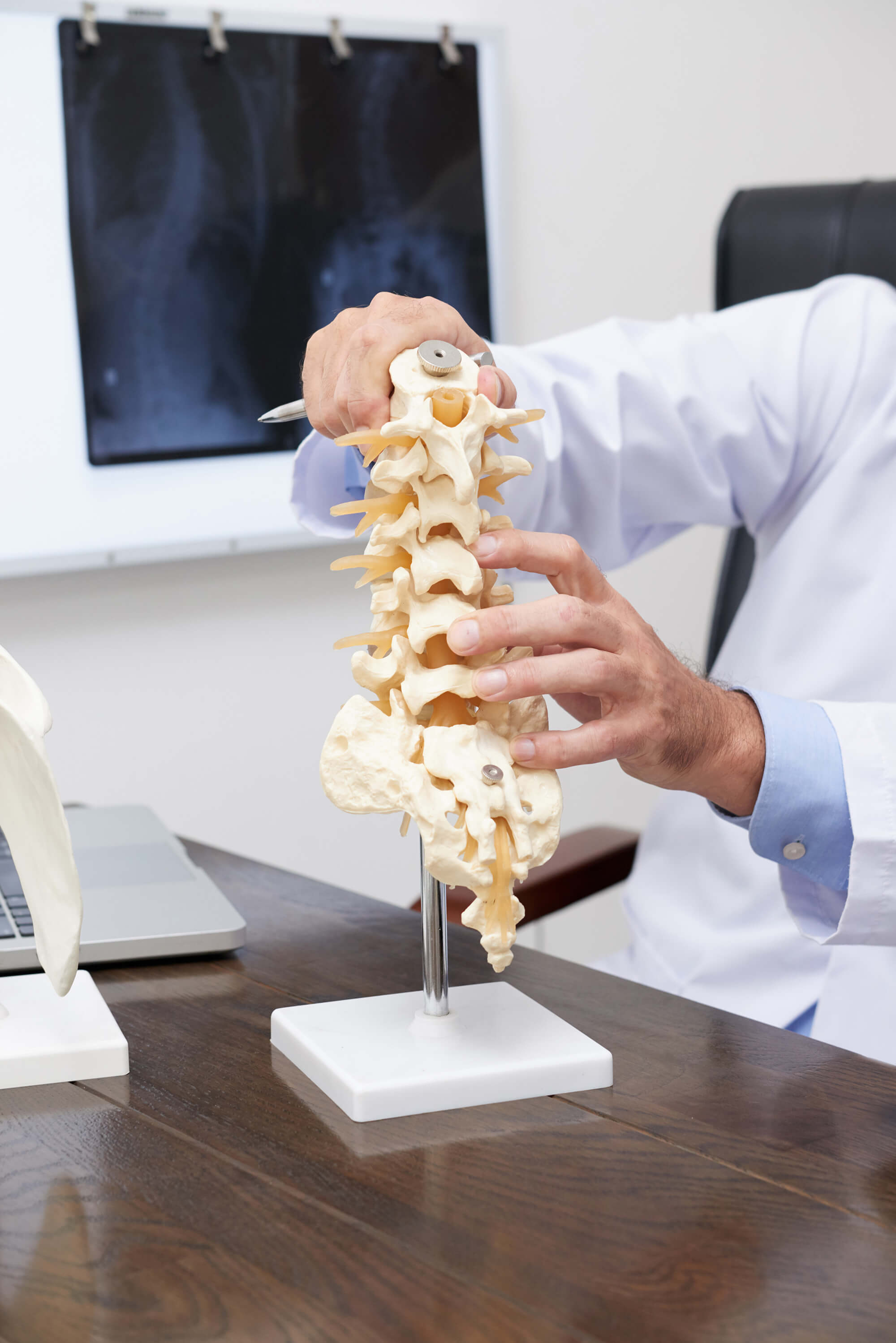Spinal instability can be a painful condition. For this reason, many people with unstable spines are interested in having minimally invasive spinal surgery (MISS) for spinal stabilization purposes. Previously, the only option for spinal stabilization surgery was the traditional open back spinal fusion method, Today, many patients are able to bypass the traditional method and have minimally invasive spine surgery (MISS) for stabilization instead.
Why Would Someone Need a Spinal Fusion?
Numerous issues can lead to an individual needing a spinal fusion.
Reasons someone may need a fusion for spinal stabilization include:
Degenerative Disc Disease
With time, the intervertebral discs between the vertebral bones deteriorate. As they deteriorate, the vertebral bones above the disc and below the disc are brought closer together, which may lead to the vertebrae rubbing against one another. This rubbing causes irritation and pain.
A Ruptured Disc
When an intervertebral disc ruptures, its mucoprotein gel breaks through the annulus fibrosus. A ruptured disc places pressure on the surrounding nerves and allows the vertebra to rub against one another. During MISS, a spinal surgeon can remove the ruptured disc and replace it with a bone graft. Over time, the upper and lower vertebrae fuse with the bone graft.
Spondylolisthesis

A medical illustration depicting spondylolisthesis by BruceBlaus CC -SA 4.0
This condition occurs when a narrow bridge of bone (pars interarticularis) breaks. Due to this break, the vertebrae become unstable and may begin to slide forward onto the vertebral bone that is directly beneath it.
A slipping vertebra can squeeze discs, irritate nerves, weaken the integrity of the spine and aggravate joints.
What are the Symptoms of Spinal Instability?
Some of the symptoms an individual with spinal instability may experience includes pain in the lower back, shooting pain down the legs (i.e., sciatica) and a tingling sensation in the lower extremities. An orthopedic surgeon may be able to address these symptoms with a spinal fusion to stabilize the patient’s spine. When a patient needs a spinal fusion, the surgeon may recommend traditional open back surgery or minimally invasive spine surgery.
Traditional Back Surgery vs Minimally Invasive Spine Surgery
At Huntington Orthopedics in Pasadena, California, whenever possible, our experienced spine surgeons use minimally invasive spine surgery to stabilize an unstable spine. Nonetheless, there are some patients who will require traditional open back surgery.
Traditional Back Surgery
While the traditional procedure serves its purpose for those who are ineligible for MISS, it does require a longer incision (up to 6 inches). Furthermore, the surgeon must separate the patient’s soft tissue and muscles manually to reach the spinal column.
Addressing Spinal Instability with Minimally Invasive Spine Surgery
(a) Postoperative anteroposterior (b) lateral radiographs showing good reduction of L5 anterolisthesis (c) An ipsilateral incision for the tubular retractor, an ipsilateral percutaneous pedicle screw system, and an upper incision for rod insertion
Katsuhiro Tofuku, Hiroaki Koga, Kazunori Yone, Setsuro Komiya, “Traumatic Lumbosacral Dislocation Treated with Posterior Lumbar Interbody Fusion Using Intersomatic Cages“, Case Reports in Medicine, vol. 2009, Article ID 727041, 4 pages, 2009. CC by 3.0
Individuals who are good candidates for a spinal fusion with MISS receive several small incisions (1 or 2 inches long). These incisions allow the orthopedic surgeon to access the spinal column.
Other benefits of MISS include:
- Some minimally invasive spine surgeries can be performed using just local anesthesia.
- When compared to open back surgery, patients experience less blood loss.
- Since the incision is short, the wound heals quicker.
- Wound infection following MISS is highly unlikely.
- When comparing MISS to traditional back surgery, the risk of damage to the back muscles decreases substantially with minimally invasive spine surgery.
- The quick rehabilitation process following most MISS makes it unlikely that the patient will become dependent on medication.
Stabilizing the Spine with Minimally Invasive Spine Surgery
Just as with traditional spinal surgery, patients receive sedatives or general anesthesia.
Procedure Steps:
- After the medication takes effect, the surgeon creates several short incisions (1 or 2 inches long) in the back.
- Using a series of dilators, which are hollow tubes that have solid inserts, the surgeon carefully spreads the muscles apart.
- After separating the muscles, the surgeon places the screws and rods through the dilator tubes. If a patient is having an interbody fusion, the surgeon removes the damaged intervertebral disc and replaces it with a bone graft before placing the hardware.
- This hardware ensures the spine remains stable as the bones fuse.
- Once the procedure is complete, the surgeon uses a few stitches and staples to close the incisions.
- A sterile bandage is placed over the incisions.
If you reside in the Pasadena, California, area and you or a loved one is experiencing back pain and spinal instability, you may be a good candidate for a spinal fusion with MISS. Contact Huntington Orthopedics today at (626) 486-9494 to schedule an appointment.





